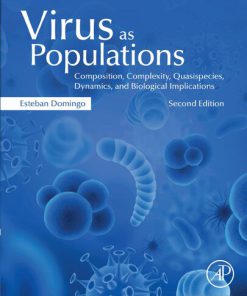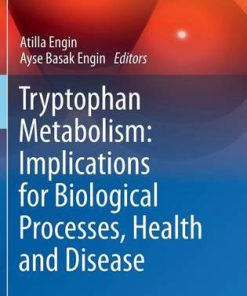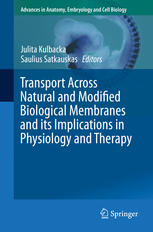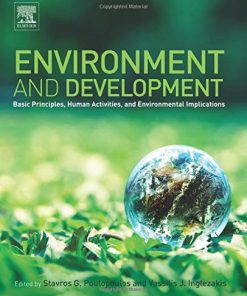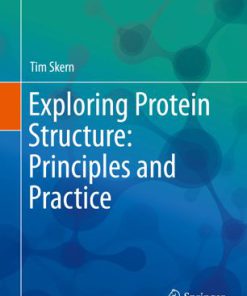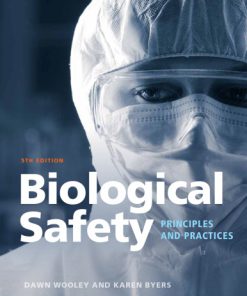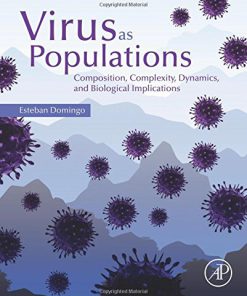Protein Carbonylation Principles Analysis and Biological Implications 1st Edition by Joaquim Ros 1119374954 9781119374954
$50.00 Original price was: $50.00.$25.00Current price is: $25.00.
Protein Carbonylation Principles, Analysis, and Biological Implications 1st Edition by Joaquim Ros – Ebook PDF Instant Download/DeliveryISBN: 1119374954, 9781119374954
Full download Protein Carbonylation Principles, Analysis, and Biological Implications 1st Edition after payment.

Product details:
ISBN-10 : 1119374954
ISBN-13 : 9781119374954
Author: Joaquim Ros
Protein carbonylation has attracted the interest of a great number of laboratories since the pioneering studies at the Earl Stadtman’s lab at NIH started in early 1980s. Since then, detecting protein carbonyls in oxidative stress situations became a highly efficient tool to uncover biomarkers of oxidative damage in normal and altered cell physiology. In this book, research groups from several areas of interest have contributed to update the knowledge regarding detection, analyses and identification of carbonylated proteins and the sites where these modifications occur. The scientific community will benefit from these reviews since they deal with specific, detailed technical approaches to study formation and detection of protein carbonyls. Moreover, the biological impact of such modifications in metabolic, physiologic and structural functions and, how these alterations can help understanding the downstream effects on cell function are discussed. Oxidative stress occurs in all living organisms and affects proteins and other macromolecules: Protein carbonylation is a measure of oxidative stress in biological systems Mass spectrometry, fluorescent labelling, antibody based detection, biotinylated protein selection and other methods for detecting protein carbonyls and modification sites in proteins are described Aging, neurodegenerative diseases, obstructive pulmonary diseases, malaria, cigarette smoke, adipose tissue and its relationship with protein carbonylation Direct oxidation, glycoxidation and modifications by lipid peroxidation products as protein carbonylation pathways Emerging methods for characterizing carbonylated protein networks and affected metabolic pathways
Protein Carbonylation Principles, Analysis, and Biological Implications 1st table of contents:
1 Reactive Oxygen Species Signaling from the Perspective of the Stem Cell
1.1 Introduction
1.2 ROS Regulation
1.3 ROS Signaling
1.4 ROS and Stem Cells
1.5 ROS, Metabolism, and Epigenetic Influence
1.6 Stem Cells and Mitochondria
1.7 ROS and Stem Cell Aging
1.8 Concluding Remarks
References
2 Analysis of Protein Carbonylation
2.1 Introduction
2.2 In Vivo Carbonylation Reactions
2.3 Analytical Derivatization of Carbonylated Groups
2.4 Selective Purification and/or Detection of Carbonylated Proteins and Peptides
2.5 Oxidative Stress‐Based PTMS Not Involving Carbonylation
2.6 Conclusion
References
3 Diversity of Protein Carbonylation Pathways
3.1 Introduction
3.2 Pathways of Protein Carbonylation
3.3 Analytical Methods for Detection of Total and Specific Protein Carbonylation
3.4 Protein Susceptibility to Different Carbonylation Pathways and Modifications Cross‐Talk
3.5 Conclusion
Acknowledgments
References
4 Protein Carbonylation by Reactive Lipids
4.1 Introduction
4.2 Chemistry of Protein Carbonylation by Reactive Lipid Aldehydes
4.3 Antigenicity of Protein Carbonyls
4.4 Thiolation of Protein Carbonyls
4.5 Reductive Amination‐Based Fluorescent Labeling of Protein Carbonyls
4.6 Conclusion
References
5 Mechanism and Functions of Protein Decarbonylation
5.1 Protein Carbonylation
5.2 Primary Protein Carbonylation in Cell Signaling
5.3 Discovery and Mechanisms of Protein Decarbonylation
5.4 Proposed Functions of Protein Decarbonylation in Oxidative Stress and Redox Signaling
Acknowledgments
References
6 Carbonylated Proteins and Their Metabolic Regulation
6.1 Metabolic Regulation and Reactive Oxygen Species
6.2 ROS and Protein Carbonylation
6.3 Metabolic Control and Characteristics of Carbonylated Proteins
6.4 Protein Targets of Carbonylation and Implications in Human Health
6.5 Technologies and Methods for Characterizing Protein Carbonylation
6.6 Emerging Multifunctional Reagents for Protein Carbonylation Analysis via MS
6.7 Emerging Methods for Characterizing Carbonylated Protein Networks and Affected Pathways
6.8 Conclusion
References
7 Oxidative Stress and Protein Carbonylation in Malaria
7.1 Introduction
7.2 Oxidative Stress during Malaria Infection
7.3 Protein Carbonylation in Plasmodium and Oxidative Targeting of Antimalarials
7.4 Oxidative Dysfunction in Host Tissues
7.5 Host Tolerance to Malaria by Modulation of Oxidative Stress Responses
7.6 Perspectives
References
8 Protein Carbonylation in Brains of Subjects with Selected Neurodegenerative Disorders
8.1 Introduction to Protein Carbonylation
8.2 Relationship between ROS and Oxidative Stress
8.3 An Overview of Some Neurodegenerative Diseases
8.4 Role of Protein Carbonylation in Brains of Subjects with AD
8.5 An Introduction to Tauopathies
8.6 An Introduction to Amyotrophic Lateral Sclerosis
8.7 Discussion
References
9 Cigarette Smoke‐Induced Protein Carbonylation
9.1 Introduction
9.2 Protein Carbonylation in Human Smokers
9.3 Protein Carbonylation in Cultured Human Cell Models of Exposure to CS
9.4 Limitations and Congruence of In Vivo and In Vitro Human Studies
9.5 Conclusion and Future Perspectives
Acknowledgments
References
10 Chronic Obstructive Pulmonary Disease and Oxidative Damage
10.1 Introduction
10.2 Protein Oxidation in Tissues
10.3 Antioxidants in Skeletal Muscle Fibers
10.4 Implications of Protein Carbonylation in COPD Skeletal Muscle Dysfunction
10.5 Muscle Protein Carbonylation and Exercise in COPD Patients
10.6 Protein Carbonylation in Muscles Exposed to Chronic Cigarette Smoke
10.7 Protein Carbonylation in Cancer Cachexia Models
10.8 Protein Carbonylation as a Predisposing Mechanism of Lung Cancer in COPD
10.9 Conclusion and Future Perspectives
Acknowledgments
References
11 Protein Carbonylation in Aging and Senescence
11.1 Introduction
11.2 Protein Oxidation during Aging
11.3 Chemistry of Protein Carbonylation and Fate of Carbonylated Proteins
11.4 Protein Carbonyls in Cellular Aging Models
11.5 Protein Carbonylation in Aging Organisms
11.6 Concluding Remarks
References
12 Adipose Carbonylation and Mitochondrial Dysfunction
12.1 Introduction
12.2 Reactive Oxygen Species (ROS)
12.3 Oxidative Stress and Obesity
12.4 Detection of Protein Carbonylation
12.5 Outcomes of Protein Carbonylation
12.6 Concluding Remarks
Acknowledgments
References
13 Protein Carbonylation in Plants
13.1 Introduction
13.2 Turnover of Reactive Oxygen Species in Plants
13.3 Methods Used in Plants for Quantifying and Identifying Carbonylation Sites
13.4 Protein Carbonylation in Plants
13.5 Protein Carbonylation in Plant Mitochondria
13.6 Protein Carbonylation in Seeds
13.7 Perspectives
Acknowledgments
References
14 Specificity of Protein Carbonylation and Its Relevance in Aging
14.1 Introduction
14.2 Specificity of Protein Oxidative Damage
14.3 Protein Carbonylation in Aging
14.4 Concluding Remarks
People also search for Protein Carbonylation Principles, Analysis, and Biological Implications 1st:
protein carbonylation oxidative stress
protein carbonylation assay
protein carbonylation assay protocol
protein carbonylation.antibody
protein carbonylation kit
Tags: Protein, Carbonylation, Principles, Analysis, Biological Implications, Joaquim Ros
You may also like…
Biology and other natural sciences
Science (General)
Education Studies & Teaching
Exploring Protein Structure Principles and Practice Tim Skern
Earth Sciences - Geology
Cookbooks




